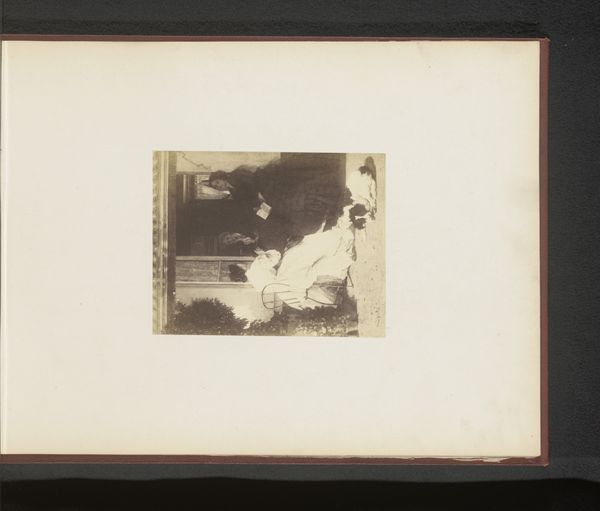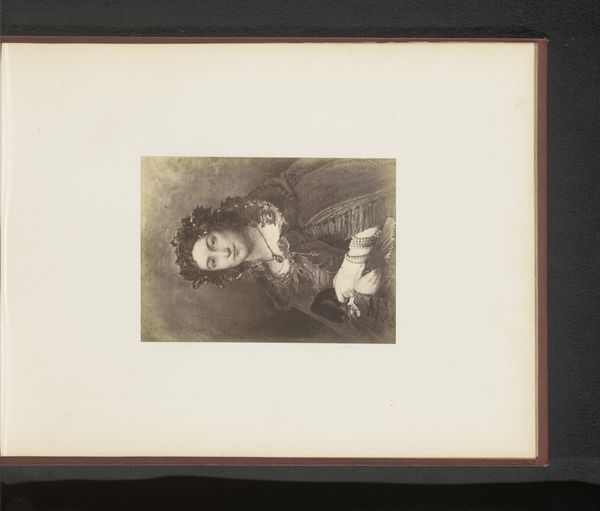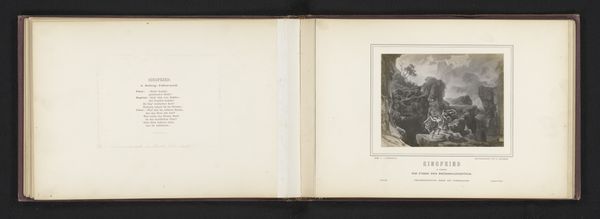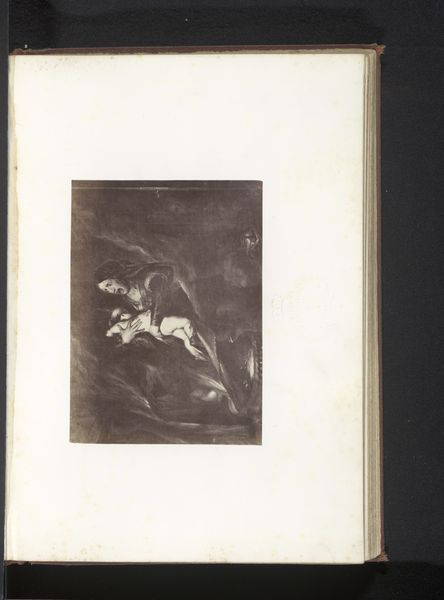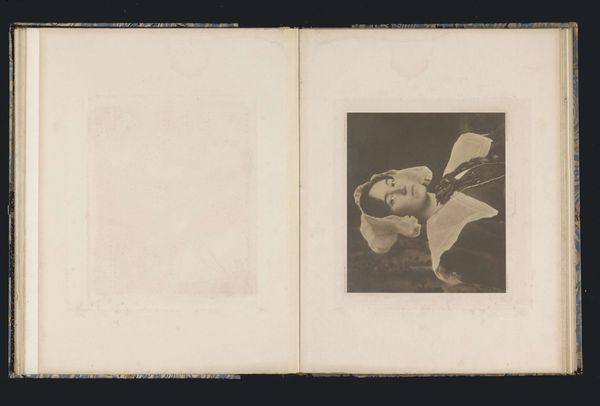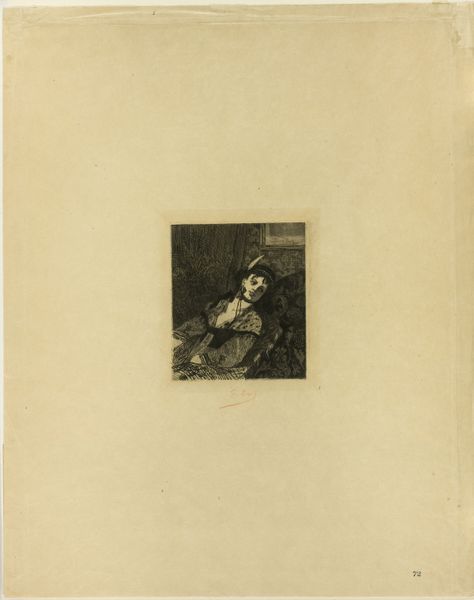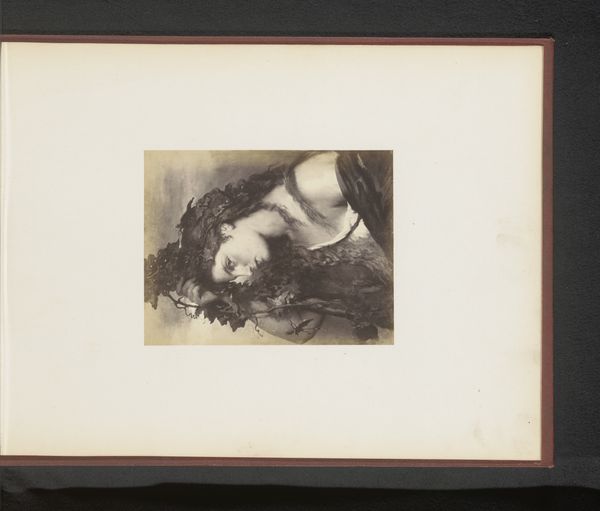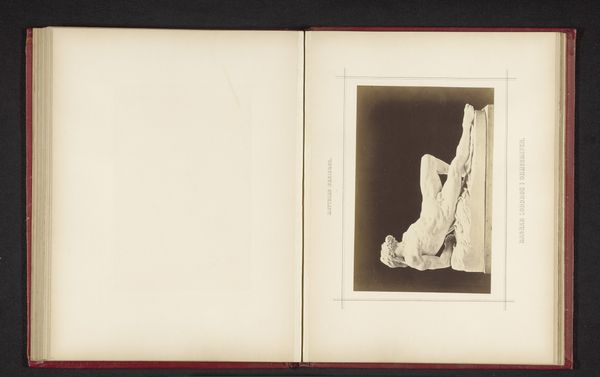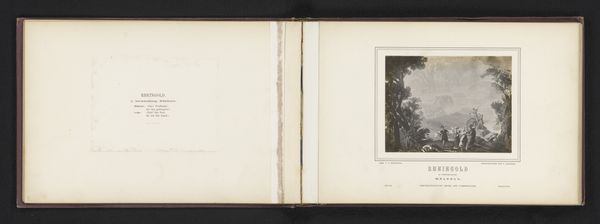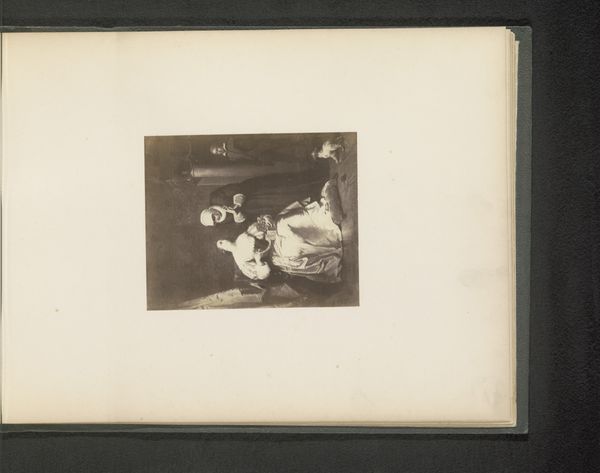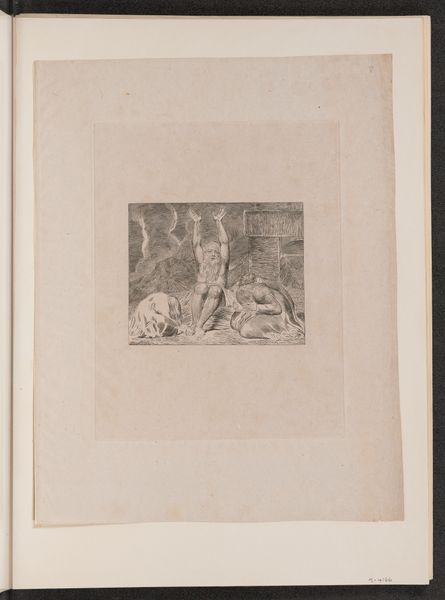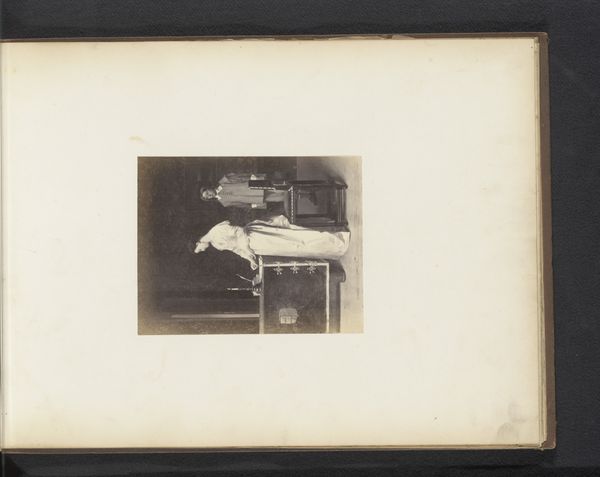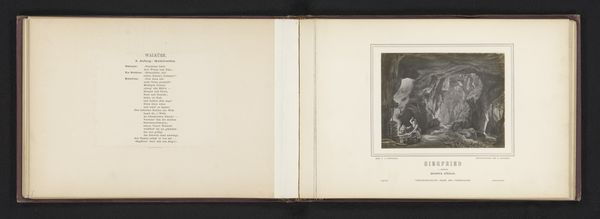
photography, gelatin-silver-print
#
portrait
#
photography
#
gelatin-silver-print
#
genre-painting
Dimensions: height 141 mm, width 114 mm
Copyright: Rijks Museum: Open Domain
Editor: Here we have a gelatin-silver print from around 1860, titled 'Fotoreproductie van La poupée van Florent Willems,' housed right here at the Rijksmuseum. It's essentially a photograph of a painting depicting a little girl and her doll. I’m struck by the intimate nature of the scene, like a glimpse into a private world. What do you see in it? Curator: It speaks volumes, doesn't it? Not just about childhood, but about how we memorialize images. Here, we have a photograph *of* a genre painting – a depiction of everyday life. The very act of photographing it imbues the image with a certain weight, a validation. Think of the doll, itself a symbol of childhood and nurturing. What does it mean when we reproduce this image through another medium? Editor: That's a really interesting point! It’s like adding layers of meaning. Is the act of reproduction diluting the original intent of the painting or reinforcing it? Curator: Perhaps both. Consider, too, the symbolism inherent in the doll's pose. Is it mimicking the girl, or is the girl mimicking the doll? And what about the quality of the print itself, the way the light falls, and the textures that are both revealed and obscured by the photographic process? It subtly changes our perception of the original scene. This subtle modification emphasizes particular ideals, making the photo stand apart from just any representation of an ordinary scene. Editor: So, in a way, this photograph becomes a cultural artifact itself, commenting on both the painting it depicts and the values of its time? Curator: Precisely. The image gains resonance as a marker of artistic styles, memory, and identity, influencing both those inside and outside of that memory and identity through the photographic symbol. The history in a photograph is always in context with symbols outside itself. Editor: I never thought about it that way before. Seeing how symbols interact with context really opens up a whole new perspective! Curator: Indeed. It is a potent photograph, a great photograph really. It represents culture, not merely something that existed within a culture.
Comments
No comments
Be the first to comment and join the conversation on the ultimate creative platform.
